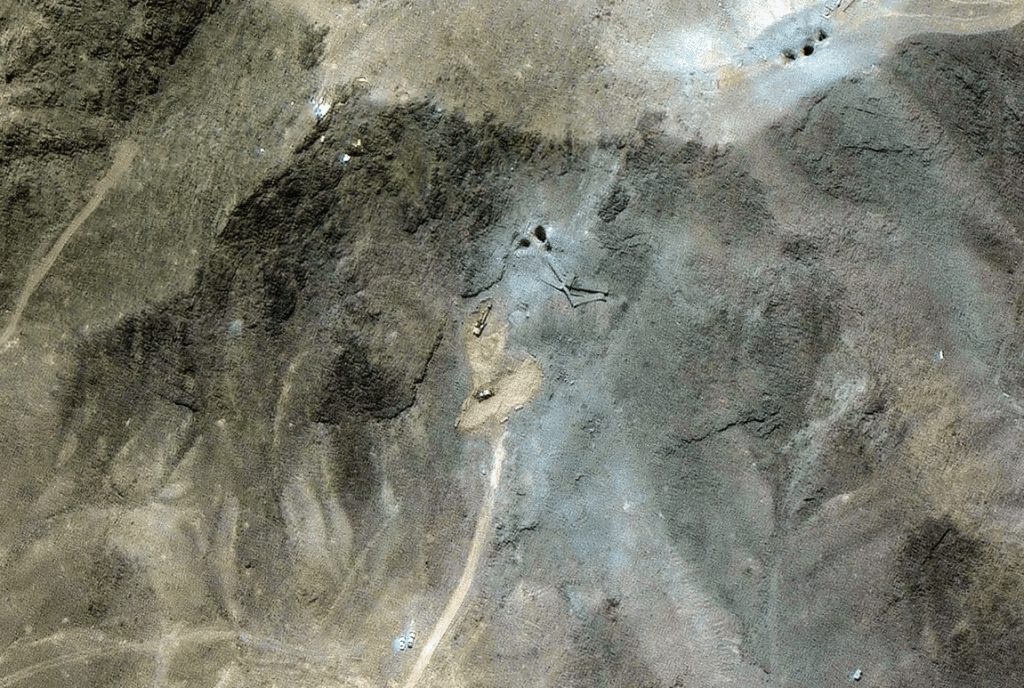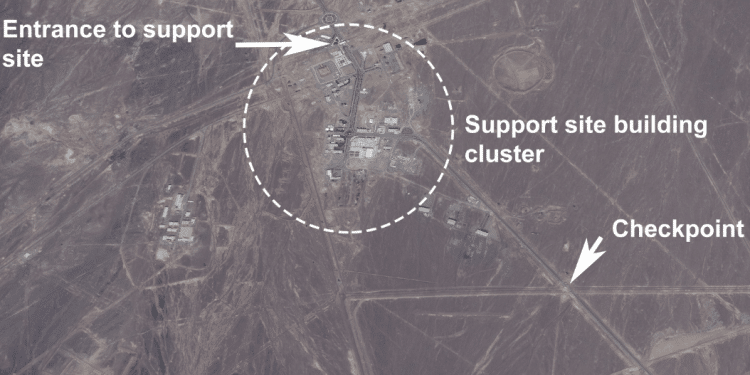New Satellite Images Show Heavy Machinery working at Fordow Nuclear Facility
Staff Writer Jake B
Raphael Grossi, Director General of the International Atomic Energy Agency, occupies one of the most precarious diplomatic positions on the global stage. As tensions simmer around Iran’s nuclear ambitions, he must project authority while often negotiating from a position of partial knowledge. His recent remarks, laced with caution but unmistakable urgency, underscore an uncomfortable reality: the IAEA’s visibility into Iran’s nuclear activities is fading.
The latest inspection reports, though limited, hint at troubling developments. Enriched uranium previously documented at declared facilities may have been transferred to undisclosed locations. It’s the kind of strategic opacity that thwarts verification efforts and raises the risk of miscalculation among regional adversaries.
There are growing whispers among intelligence agencies and independent analysts alike—suggesting that Iran has not only exceeded the 60% enrichment threshold, but may have also dispersed material in ways designed to evade detection. While no official confirmation has been offered, even the possibility has rattled those familiar with proliferation pathways.
Grossi’s public statements are deliberately measured. He speaks of “declining transparency” and “reduced verification capacity,” phrases that seem bureaucratic on the surface but signal alarm in diplomatic code. Between the lines, it’s increasingly evident that Iran retains the infrastructure and capability to achieve breakout status with little forewarning.
Beyond uranium enrichment, concerns now emerge around the reactivation of Iran’s dormant plutonium track. Long sidelined in favor of uranium-based development, this alternative pathway—if pursued—would signal an even more dangerous turn. Plutonium, while harder to extract, lends itself to compact, weaponized designs with fewer observable indicators.
That’s precisely what makes the plutonium scenario so vexing. Unlike uranium enrichment, which typically involves industrial-scale centrifuge arrays, plutonium reprocessing can be concealed within smaller and more discreet facilities. If Iran is indeed reviving this research, it could represent a dual-track insurance policy: a second route to a nuclear capability, should the first falter.
What makes the situation even more volatile is Iran’s mastery of the underlying science. Decades of research, both civilian and clandestine, have given its nuclear personnel the technical know-how to reboot latent projects swiftly. Physical infrastructure can be dismantled or degraded—intellectual infrastructure cannot.
The unraveling of the 2015 Joint Comprehensive Plan of Action marked a pivotal shift. Since the U.S. withdrawal, Iran has steadily ramped up enrichment levels and centrifuge production, incrementally crossing red lines that once sparked global outrage but now elicit weary acceptance. The erosion of those boundaries is perhaps the most dangerous development of all.
Grossi finds himself walking a diplomatic tightrope. He must maintain some degree of access to Iranian facilities and goodwill from Tehran, while keeping increasingly skeptical Western powers engaged. His credibility is now judged not only by the rigor of his agency’s technical assessments but by his ability to hold a fragile consensus together.
The strategy of containment is faltering. When a state develops complete control over the nuclear fuel cycle, civilian labels become diplomatic cover. Without reliable inspections, the line between peaceful development and military ambition becomes impossible to discern—until it’s too late.
Meanwhile, diplomatic efforts have stagnated. Negotiations yield few breakthroughs, and Iran’s nuclear advancements continue apace. Its leadership projects defiance while courting strategic ambiguity, confident in the deterrent value of an almost-weapon.
Regional responses reflect this new calculus. In the Gulf, countries like Saudi Arabia and the UAE pursue nuclear technologies of their own. While ostensibly peaceful, these moves are heavily shadowed by Iran’s trajectory, hinting at a coming regional scientific arms race.
Israel, long defined by its policy of strategic opacity, may soon face pressures to alter its posture. Whether through clandestine operations or overt threats, the risk of confrontation is no longer theoretical. The red lines are blurring, and with them, the predictability of outcomes.
Iran claims it seeks nuclear advancements for energy and medical use. Yet critics argue that this narrative masks deeper ambitions. The longer Tehran walks this ambiguous line, the more normalized its advances become—and the harder it becomes to distinguish intent from capability.
Amid these dynamics, Grossi presses on. He visits Tehran, secures limited concessions, and issues reports that read increasingly like cautionary epilogues. The symbolic gestures of cooperation rarely translate into substantive access or confidence.
Today, experts speak less of “breakout time” and more of “breakout intent.” The window for Iran to develop a nuclear weapon, should it choose to, may now be a matter of weeks rather than months. This new timeline alters threat assessments across the board.
With the international community distracted, and trust in deterrence mechanisms fading, we may be entering a diplomatic vacuum. Into that void, Iran’s centrifuges continue to spin, and the IAEA’s influence wanes. Grossi remains the last, uneasy bridge between transparency and uncertainty.
The world now faces a decision. Will it double down on diplomacy, recalibrate deterrence, or quietly concede Iran’s de facto nuclear threshold? Each path carries risk—and the weight of historical consequence. For now, the centrifuges whirl and the cascade flows on, watched by a man whose gaze may no longer be enough.

New satellite imagery of Iran’s Fordow nuclear facility reveals a flurry of activity that has reignited global scrutiny. Captured just days after U.S. B-2 bombers targeted the underground site with Massive Ordnance Penetrators, the images show heavy machinery operating near tunnel entrances, fresh earth movement, and newly carved access roads. While the Pentagon hailed the strikes as a success, the presence of bulldozers and excavators suggests Iran may have anticipated the attack—and is now working swiftly to either conceal damage or restore functionality.
The Fordow facility, buried deep within a mountain south of Tehran, has long been a focal point of international concern due to its capacity to enrich uranium to weapons-grade levels. The recent operation, dubbed “Midnight Hammer,” was intended to neutralize that threat. Yet the satellite photos hint at a more complex reality: tunnel entrances appear to have been sealed with dirt before the strikes, and Iranian state media claims enriched uranium was relocated in advance. If true, this would mark a strategic maneuver to preserve critical assets while absorbing the optics of a devastating blow.
The legacy of Iran’s earlier program—the so-called AMAD Project—looms over the present moment. Though officially ended in 2003, the documentation, experimental data, and infrastructure never vanished. Elements were archived, preserved, or quietly adapted for civilian purposes. The ghosts of AMAD have not been exorcised.

Closer View of Fordow Days after the B2 Bombings. It appears the Earthmoving Equipment is attempting to gain access to the subterranean Nuclear Facility
More to come on this!





